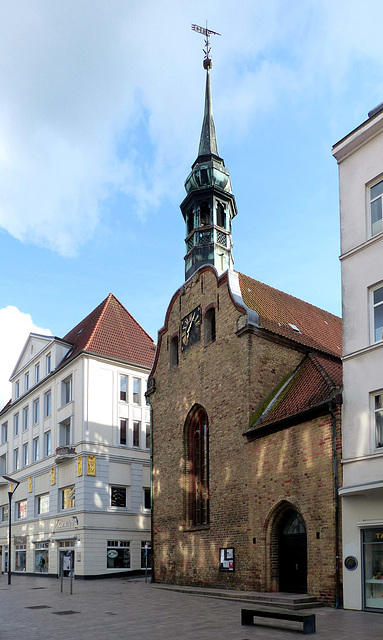Flensburg - Grosse Strasse
Flensburg - Holm
Flensburg - Zur Börse
Flensburg - Rote Strasse
Flensburg - St. Nicolai
Flensburg - St. Nicolai
Flensburg - St. Nicolai
Flensburg - St. Nicolai
Adelby - Johanniskirche
Adelby - Johanniskirche
Adelby - Johanniskirche
Adelby - Johanniskirche
Adelby - Johanniskirche
Husby - St. Vincentius
Hürup - Marienkirche
Freienwill - St. Johannes-Kirche Kleinsolt
Großsolt - Kirche
Oeversee - St. Georg
Oeversee - St. Georg
Sieverstedt - St. Peter
Hannover - Alan Touring
Hannover - Altes Rathaus
Hannover - Altes Rathaus
Flensburg - St. Jürgen
Satrup - St. Laurentius
Satrup - St. Laurentius
Satrup - St. Laurentius
Satrup - St. Laurentius
Satrup -St. Laurentius
Satrup -St. Laurentius
Satrup - Königlich Privilegierte Apotheke
Struxdorf- St. Georg
Struxdorf- St. Georg
Struxdorf- St. Georg
Struxdorf- St. Georg
Uelsby - St. Jakobus
Fahrenstedt - Kirche
Fahrenstedt - Kirche
Loit - Kirche
Loit - Kirche
Rabenkirchen - St. Marien
Rabenkirchen - St. Marien
Rabenkirchen - St. Marien
Rabenkirchen - St. Marien
Arnis - Schifferkirche
Location
See also...
Keywords
Authorizations, license
-
Visible by: Everyone -
All rights reserved
-
60 visits
Flensburg - Helligåndskirken


With a population of about 90.000, Flensburg is, after Kiel and Lübeck, the third-largest town in Schleswig-Holstein.
Flensburg was founded at the latest by the middle of the 12th century at the end of the Flensburg Firth by Danish settlers, who were soon joined by German merchants. The place was considered a safe haven with protection from strong winds. Two important trade routes of the time crossed here and the large number of herrings in the firth was a factor for economic well-being. These herrings (pickled in salt) were sent across Europe in medieval times.
In 1284 Danish King Erik Glipping granted the new town charter, the content of which suggests a very lively trade. Duke Waldemar IV of Schleswig confirmed the town charter. Flensburg quickly became the most important city in the Duchy of Schleswig, a Danish fiefdom with the Danish king as feudal lord, which, in contrast to Holstein, which is adjacent to the south, did not belong to the Holy Roman Empire.
During Denmark's war against the Hanseatic League and Holstein, Danish mercenaries first conquered and looted the city in 1426, followed by Holstein and Hanseatic mercenaries in 1431.
The Helligåndskirken is the main church of the Evangelical Lutheran Church of Denmark in Flensburg.
The Gothic two-nave hall church was the church of the "Hospital zum Heiligen Geist", that had been founded around 1300. As part of the hospital, the church was built in 1386.
After the Reformation, the hospital was merged with the other ecclesiastical foundations in the city. The church was too large and it was threatened with decay and demolition, but finally, the church was used for Danish-language services in the future. Since the Reformation, German had been the church language in the town, but not everyone understood it. Since 1588, services have been held in the church in Danish.
Flensburg was founded at the latest by the middle of the 12th century at the end of the Flensburg Firth by Danish settlers, who were soon joined by German merchants. The place was considered a safe haven with protection from strong winds. Two important trade routes of the time crossed here and the large number of herrings in the firth was a factor for economic well-being. These herrings (pickled in salt) were sent across Europe in medieval times.
In 1284 Danish King Erik Glipping granted the new town charter, the content of which suggests a very lively trade. Duke Waldemar IV of Schleswig confirmed the town charter. Flensburg quickly became the most important city in the Duchy of Schleswig, a Danish fiefdom with the Danish king as feudal lord, which, in contrast to Holstein, which is adjacent to the south, did not belong to the Holy Roman Empire.
During Denmark's war against the Hanseatic League and Holstein, Danish mercenaries first conquered and looted the city in 1426, followed by Holstein and Hanseatic mercenaries in 1431.
The Helligåndskirken is the main church of the Evangelical Lutheran Church of Denmark in Flensburg.
The Gothic two-nave hall church was the church of the "Hospital zum Heiligen Geist", that had been founded around 1300. As part of the hospital, the church was built in 1386.
After the Reformation, the hospital was merged with the other ecclesiastical foundations in the city. The church was too large and it was threatened with decay and demolition, but finally, the church was used for Danish-language services in the future. Since the Reformation, German had been the church language in the town, but not everyone understood it. Since 1588, services have been held in the church in Danish.
Marco F. Delminho, Dimas Sequeira, Fred Fouarge have particularly liked this photo
- Keyboard shortcuts:
Jump to top
RSS feed- Latest comments - Subscribe to the comment feeds of this photo
- ipernity © 2007-2024
- Help & Contact
|
Club news
|
About ipernity
|
History |
ipernity Club & Prices |
Guide of good conduct
Donate | Group guidelines | Privacy policy | Terms of use | Statutes | In memoria -
Facebook
Twitter

Sign-in to write a comment.